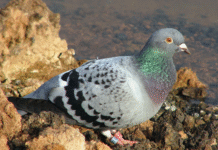AS is true for many agricultural products, the process for growing coffee is complex. Increased use of fertiliser and pesticides will likely lead to higher crop yields, but at significant cost to wildlife populations and human health. Using fewer agrochemicals is more environmentally friendly, but requires farmers to face increased risks of losing crops to pests and disease.
A forthcoming paper led by researcher Juan Nicolás Hernandez- Aguilera, a postdoctoral scientist at the International Research Institute for Climate and Society, suggests this trade-off may not be as straightforward as previously thought, and that farmers could be better off financially if they used shade-growing practices for part of their production. The paper will be published in the May issue of the journal Ecological Economics.
No previous study has quantified the economic trade-offs a smallholder farmer would experience in shifting from conventional coffee growing to shade-grown.
They examined a number of factors, including the cost of planting new trees, the price premiums that coffee consumers are willing to pay, and the potential yields farmers could see.
The model suggests that farmers can optimise their coffee profits by converting a third to two-thirds of their acreage to shade-grown production.

















